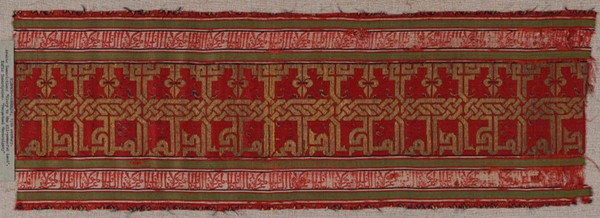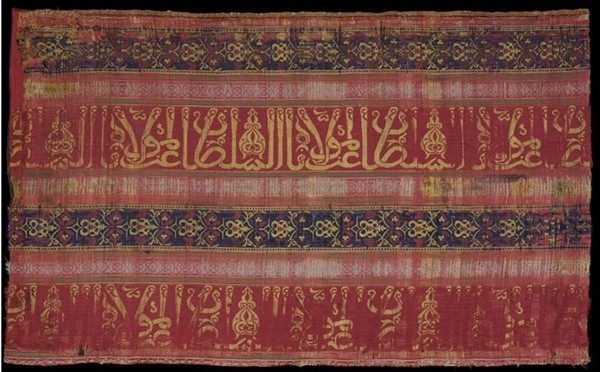Hello to all,
I don't think the tile hypothesis is valid in this case:

FIG b. P. del Pollaiolo, allegory of Faith, 1469-1470 Uffizi, Florence
The bands format drove my research to some silk textiles fragments still existing in some museums or collections:

XIV-XVth c. Spain (made) Satin band, woven in gold thread along the centre.
A simulated Kufic inscription on a red ground; along either side runs the repeating Arabic inscription "Glory to the All-powerful Lord" in red silk on a white ground, bordered by narrow bands in green, red, blue and white.
Source: V&A museum website
or like this one:

XIVth c. Spain (made) Silk and metal-wrapped thread in lampas weave.
The weaver of this silk from Muslim Spain has accurately reproduced the flowing lines of an inscription in Arabic, a task requiring enormous care. The phrase ‘Glory to our lord the sultan’ has been repeated within the widest band in the design, creating the illusion of a long frieze of calligraphy.
Source: V&A museum website
Best regards,
Y
